What is STEM? STEM is an acronym that stands for science, technology, engineering, and math. STEM subjects develop creators, thinkers, problem solvers, doers, innovators, and inventors. Exposing kids to simple STEM activities at an early age today sets a foundation for higher learning tomorrow. STEM skills have many real-world applications and many fantastic STEM careers to explore. Find out what makes for a good STEM activity and how to set up STEM projects easily for kids of all ages.
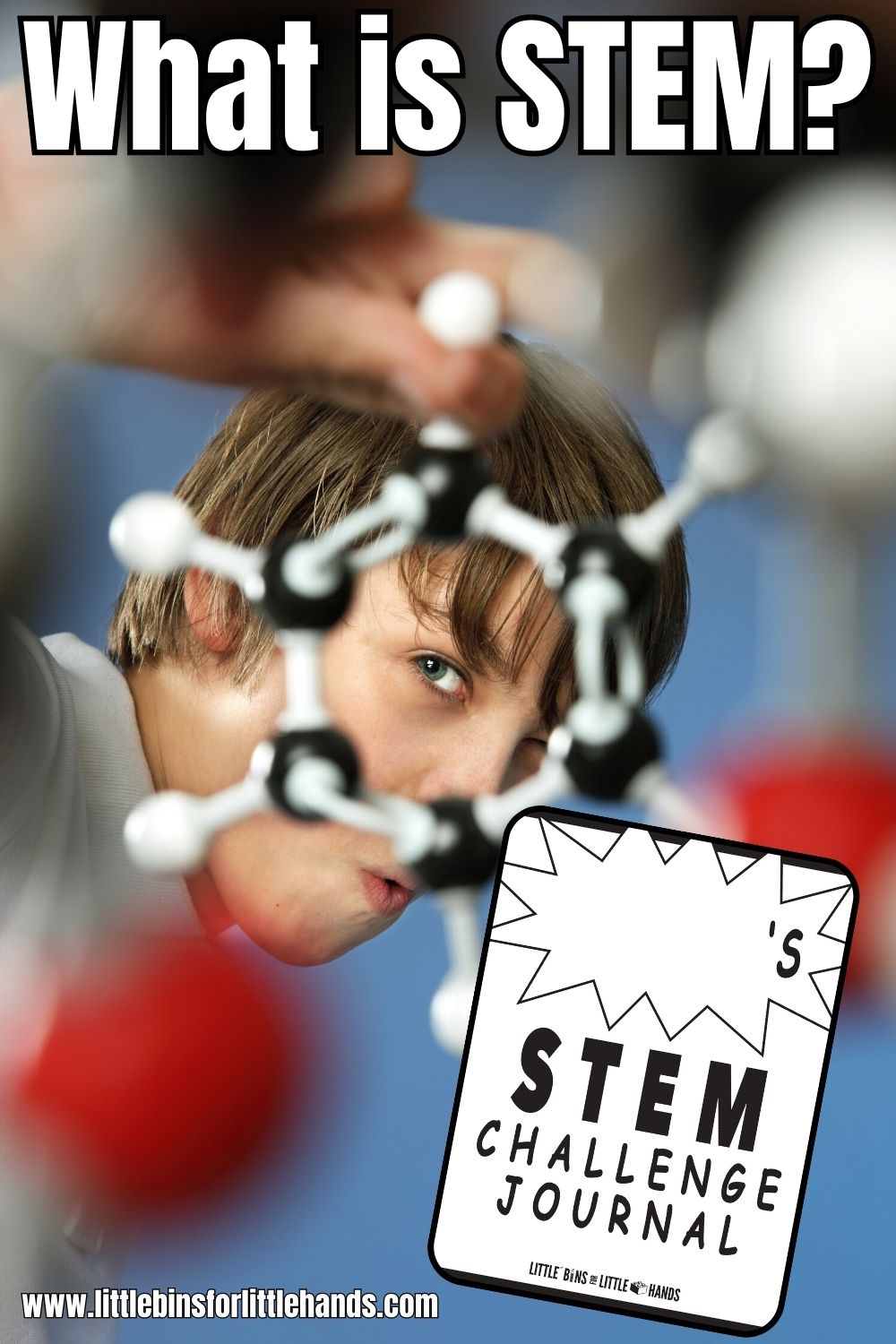
What Is STEM For Kids
Over the years, my son and I have greatly enjoyed building our science knowledge with more than 100 fantastic STEM activities and counting. We have explored so many areas, including engineering, coding, physical science, chemistry, biology, geology and more.
Our STEM activities have become some of our favorite projects of all time! Read on to learn more about STEM education, STEM careers, and starting a STEM program with young children at home or in the classroom.
What does STEM stand for?
STEM is an acronym for science, technology, engineering, and math. STEM stands for hands-on learning that applies to the world around us.
STEM activities build and teach creativity, problem-solving, life skills, ingenuity, resourcefulness, patience, and curiosity. STEM is what will shape the future as our world grows and changes.
STEM learning is everywhere and in everything we do and live, from the natural world around us to the tablets in our hands. STEM builds inventors!
What is STEM Education?
STEM education refers to an approach to learning that focuses on four key areas: Science, Technology, Engineering, and Mathematics. It is designed to promote the development of critical thinking, problem-solving skills, creativity, and collaboration in kids from an early age.
STEM education aims to prepare kids for the rapidly evolving world by equipping them with the knowledge and skills required to succeed in fields related to science, technology, engineering, and mathematics. It encourages hands-on, inquiry-based learning experiences that engage kids in real-world problem-solving and experimentation.
In STEM education, kids are encouraged to explore and understand science principles through experiments and observations.
They learn about technology by using digital tools and exploring coding concepts. Start with screen-free coding activities such as algorithms and binary code as an early introduction to computer science.
Engineering activities help them understand the design and construction of structures, machines, and systems. Mathematics is integrated into STEM education to develop logical thinking, data analysis, and quantitative reasoning skills.
STEM education typically involves interactive and collaborative activities through elementary and middle school, such as building models, conducting experiments, programming robots, designing and testing prototypes, and engaging in teamwork. It emphasizes creativity, critical thinking, and the ability to communicate and present ideas effectively.
By introducing kids to STEM at an early age (even in preschool and kindergarten), educators and parents hope to foster an interest in these fields and encourage the pursuit of STEM-related careers. STEM education also promotes a mindset of lifelong learning, which are valuable in any area of life.
You might also like: Learn about Famous Women in STEM
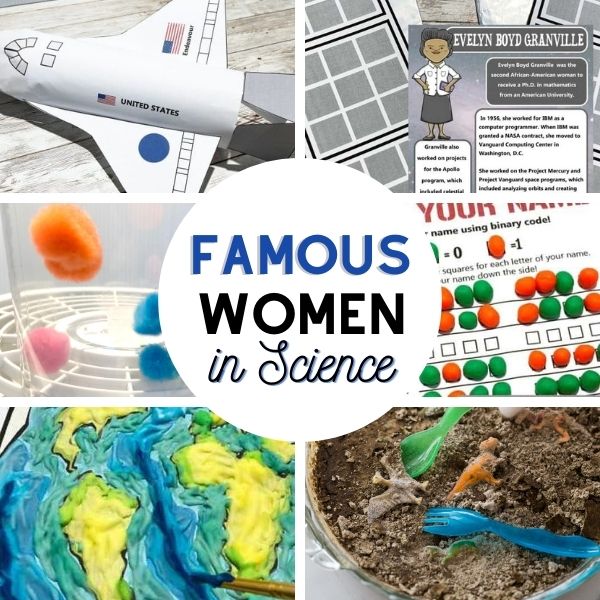
Why Do STEM Activities With Kids?
Kids thrive with STEM activities. Whether in the successes or learning through failures, STEM projects push kids to expand their horizons, experiment, problem-solve, and accept failure as a means to success.
Great STEM activities focus on science, technology, engineering, and math. Sometimes, a STEM activity will involve one learning area; other times, it will include aspects of all four domains. The best STEM activities are open-ended and have a challenge or question for kids to investigate or solve.
Choose STEM activities early on and playfully present them. You will teach your kids unique concepts, build a love for exploring, discovering, learning, and creating, and possibly set them on a path to a fantastic STEM career!
Check out these famous people in STEM fields (past and present).
STEM Careers
STEM careers require skills and knowledge in Science, Technology, Engineering, and Mathematics. These careers involve applying scientific principles, utilizing technology, designing and building structures, analyzing data, and solving complex problems. Here are some examples of STEM careers that kids may be interested in:
- Scientist: Kids can pursue careers as biologists, chemists, physicists, environmental scientists, astronomers, and cartographers, among others. They can research, conduct experiments, and contribute to scientific discoveries. Explore fossils with Mary Anning or map the ocean floor with Marie Tharpe
- Engineer: Various engineering fields include civil engineering, mechanical engineering, electrical engineering, aerospace engineering, and biomedical engineering. Engineers design and build structures, machines, systems, and technologies to address specific needs. How about building an Archimedes screw?
- Programmer/Software Developer: Kids interested in technology can become programmers or software developers. They can learn coding languages and develop software, applications, websites, and video games. It’s also handy for the new onset of artificial intelligence. Try coding with Margaret Hamilton.
- Mathematician: Mathematics enthusiasts can become mathematicians who work on solving complex mathematical problems, analyzing data, and applying mathematical principles to various fields such as finance, cryptography, and computer science, like the mathematician, Katherine Johnson
- Data Scientist: Data scientists analyze and interpret large sets of data, drawing insights and patterns to make informed decisions. They utilize mathematical and statistical techniques to extract valuable information.
- Medical Professional: Kids interested in biology and healthcare can pursue careers as doctors, nurses, pharmacists, or biomedical researchers. They can contribute to improving human health and finding innovative medical solutions. Make a Stethoscope with Susan Picotte.
- Environmental Scientist: Environmental scientists study the environment and work to protect and conserve natural resources. They may focus on climate change, pollution, conservation, and sustainability.
- Robotics Engineer: Robotics engineers design, build, and program robots for various applications, such as manufacturing, healthcare, exploration, and entertainment.
- Architect: Kids with an interest in design and construction can become architects. They create building plans and designs, considering aesthetics, functionality, and sustainability.
- Astronaut: Aspiring astronauts can work in the field of space exploration, studying astronomy, physics, and engineering to contribute to space missions and research. Learn more about astrophysicist Neil deGrasse Tyson.
These are just a few examples of the many STEM careers available. It’s important to encourage exploration and expose kids to a wide range of opportunities in a fun way during these early years, allowing them to discover their interests and passions within the STEM fields.
Famous Men and Women in STEM
We have a fantastic collection of STEM activities that showcase famous men and women in STEM. Or you can grab our complete, done-for-you Famous People in STEM Pack here (growing resource).
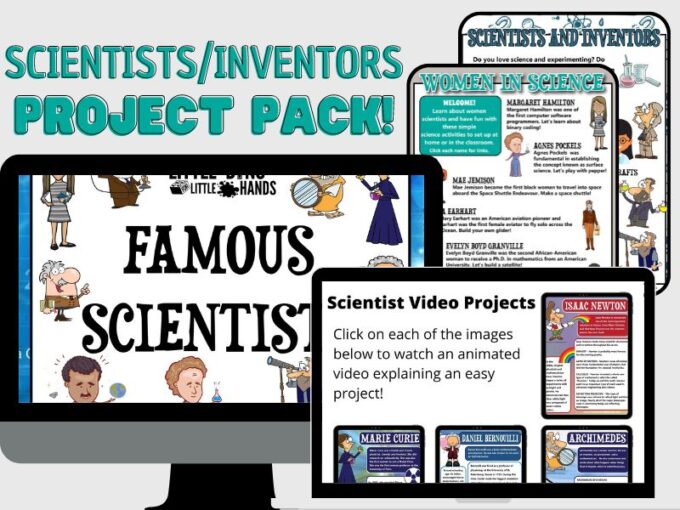
Real World STEM Applications
Show kids how STEM is used every day…
As you drive around your community (or even just at the grocery store!), highlight the different ways STEM has influenced and shaped your town, city, or community, and will continue to do so in future generations.
Examples include city planning, parks and green spaces, highways and bridges, or even how the food is managed/stored/sold at the grocery store.
Around the house, point out standard tools and items with a STEM foundation, such as a wheelbarrow or a screwdriver. If you can, test them out with your kids! Try one or two of these simple machines projects.
For another example, milk pours from a container because of gravity (science-physics)) and of course there are the cows that produce the milk (science-biology). Special machines have been designed and built to pasteurize the milk (technology & engineering). Use a measuring cup to measure out 8 ounces of milk for a recipe (math). A simple carton of milk is brought to you by STEM.
Try out our template to set up a Real World STEM Challenge with your kids or group.
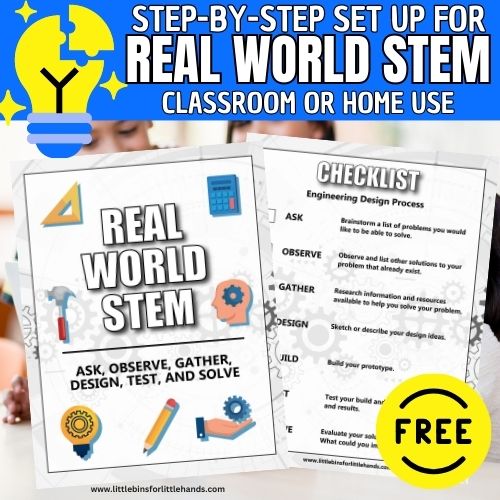
Where Do I Start with A STEM Program?
STEM programs for kids are designed to inspire a love for learning, promote teamwork and collaboration, and prepare kids for future careers in STEM fields. They provide opportunities for hands-on exploration, critical thinking, and problem-solving, encouraging kids to participate actively in the exciting world of science, technology, engineering, and mathematics.
Why not start with one or more of the simple STEM projects below? See which ones best fit your needs and how you can adapt those STEM activities that may seem too difficult or too easy depending on your kids. You can use STEM in the classroom, at home, with afterschool groups and clubs!
Is STEM for Young Kids Too?
Yes! STEM is perfect for toddlers and preschoolers! Digging in the dirt, examining bugs, exploring favorite iPad apps, and building with blocks or magnetic tiles all involve some form of STEM. Of course, we prefer as many hands-on (and screen-free) activities as possible for our young people of today’s world.
Free 5 Day STEM Challenge Pack
If you want to dip your toes in the water with STEM activities or need something to keep the kids busy, grab this free 5-Day STEM Challenge Pack!
What are STEM Activities?
Kids are already curious creatures! How can you use STEM activities to foster their love of learning about and discovering new things in the world around them?
STEM doesn’t have to be expensive or complicated. So many of our STEM activities use simple supplies you can find in your own kitchen or recyclables. Check out our DIY STEM Kit, and make sure to grab our free printable STEM supplies list.
Science in STEM
Science is a fundamental component of STEM education for kids. It plays a significant role in fostering curiosity, promoting critical thinking, and developing an understanding of the natural world. Here’s how science relates to STEM:
- Inquiry and Observation: Science encourages kids to ask questions and make observations about the world around them. It teaches them to use their senses to gather information, make predictions, and form hypotheses. Try this dissolving candy experiment.
- Hands-on Experiments: Science in STEM for kids involves plenty of hands-on experiments and investigations. Kids can explore scientific concepts through experiments, allowing them to test hypotheses, collect data, and draw conclusions in a meaningful way.
- Scientific Method: Science introduces kids to the scientific method—a systematic approach to problem-solving and understanding the world. They learn to formulate questions, develop hypotheses, design experiments, collect and analyze data, and draw conclusions based on evidence. Read more about the Scientific Method here.
- Collaboration and Communication: Science emphasizes collaboration and communication skills. Kids often work in teams to conduct experiments, discuss their findings, and present their results. They learn to listen to others’ perspectives, share ideas, and communicate their findings effectively. Such a valuable real-world skill! Try these questions for reflection.
- Science Branches: Science encompasses various branches such as biology, chemistry, physics, geology, astronomy, oceanography, etc.
- Critical Thinking and Problem-Solving: Science builds critical thinking skills in kids. It challenges them to analyze information, evaluate evidence, and think critically to solve problems. They develop skills in logical reasoning, data analysis, and making informed decisions.
- Science Application: Science focuses on applying scientific knowledge to real-world problems. Kids explore how scientific principles and discoveries contribute to technological advancements, medicine, environmental conservation, and other areas. Make sure to explore our famous scientists!
- STEM Integration: Science is integrated with technology, engineering, and mathematics in STEM education. Kids learn to apply scientific principles and methods in engineering design challenges, use technology to gather and analyze data, and apply mathematical concepts to solve scientific problems.
By incorporating science into STEM education, kids develop a scientific mindset, become familiar with the scientific process, and appreciate the importance of evidence-based reasoning. They gain an understanding of scientific concepts and develop skills that are essential for future STEM pursuits and careers. Science fosters curiosity, critical thinking, and a lifelong love for learning about the world around us.
Science doesn’t need to be complicated.
Easy science experiments are fantastic for kids! They are visually stimulating, hands-on, and sensory-rich, making them fun to do and perfect for teaching simple science concepts at home or in the classroom.
Helpful Science Resources:
- Learn all about scientists.
- Use the scientific method with kids.
- Explore common science vocabulary.
- Enjoy science books.
Easy Science Experiments:
Here are a few of our favorite science experiments to get you started, or grab our 12 science experiments challenge calendar 👇…
- Growing crystals
- Egg in vinegar experiment
- Eupting volcano
- Magic milk experiment
- Elephant Toothpaste
- Lemon Battery
- Invisible Ink
- Balloon Rocket
Technology in STEM
Why not one of our screen-free coding activities for kids, or check out these nature apps? Learning about algorithms and binary coding is easy peasy when you add hands-on activities. Get the basics down with do-able coding activities the kids will have a blast with too.
Technology in STEM for kids refers to the tools, devices, and systems that are designed and created to solve problems, improve efficiency, and enhance our daily lives. It involves understanding how technology works, learning to use it effectively, and exploring its applications in various fields. Learn about Margaret Hamilton and binary code!
Technology often includes digital devices, software, and programming concepts. Here are some key aspects of technology in STEM for kids:
- Digital Devices: Kids interact with various digital devices such as computers, tablets, smartphones, and digital cameras. They learn how to use these devices to access information, do research, communicate, and create content.
- Coding and Programming: Kids can explore the basics of coding and programming, learning how to write instructions for computers and digital systems. Start with algorithms and binary code!
- Robotics: Robotics combines engineering and technology, allowing kids to build and program robots. They learn about sensors and motors and use programming to control the behavior of their robots. Get started with this simple Art Bot.
- Digital Tools and Software: Kids use various digital tools and applications to enhance their learning experience. This may include interactive simulations, virtual laboratories, educational apps, and multimedia creation tools.
- Internet and Online Resources: Kids learn to navigate the internet safely and effectively, using online resources to research, gather information, and collaborate. They develop skills in evaluating online content and practicing responsible digital citizenship.
Technology in STEM for kids provides hands-on exploration, problem-solving, and critical thinking opportunities. It helps them understand the role of technology in our society and prepares them for the technology-driven world by developing skills such as computational thinking, digital literacy, and adaptability.
By integrating technology into STEM education, kids gain practical knowledge and skills that can open doors to future careers in technology-related fields such as computer science, software engineering, information technology, and more.
Try these creative coding activities to get kids started with technology without screens.
Engineering in STEM
Engineering for kids involves applying scientific and mathematical principles to design and build things. It is a field that encourages creativity, problem-solving, and critical thinking skills to create solutions to real-world challenges.
Engineering is all around us, from the buildings we live into the cars we drive, the smartphones we use, and the bridges we cross. It encompasses various branches, such as civil engineering, mechanical engineering, electrical engineering, and aerospace engineering. Each branch focuses on different areas and uses specific knowledge and skills.
For example, civil engineers design and construct buildings, bridges, and roads to make our cities functional and safe. Mechanical engineers work on machines and devices, designing and building things like cars, robots, and appliances.
Electrical engineers deal with electricity and electronics, creating and improving electrical systems and gadgets. Aerospace engineers design and build aircraft and spacecraft, exploring the mysteries of the sky and beyond.
In engineering, kids use their imagination and problem-solving abilities to develop solutions. They learn to plan, design, build, and test their ideas. Engineering projects often involve teamwork and collaboration, where kids work together to solve complex problems.
Engineering for kids is a hands-on and interactive experience. It can involve building structures with blocks, constructing simple machines, or even creating prototypes using 3D printers. Kids develop essential skills such as critical thinking, creativity, communication, and perseverance by engaging in engineering activities.
Engineering for kids sparks their curiosity and encourages them to think like engineers—analyzing problems, brainstorming solutions, and putting their ideas into action. It introduces them to the exciting world of innovation and technology and prepares them for potential careers in engineering or related fields.
Engineering Resources:
- Learn about the Engineering Design Process.
- Understand and use simple Engineering Vocabulary.
- Find out What is an Engineer.
- Read best Engineering Books for kids.
Kids love to design and build things, from bridges and towers to simple machines and robots! Or try our printable Engineering Challenges!
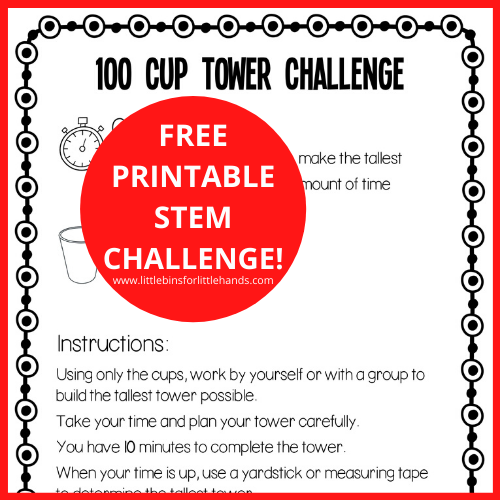
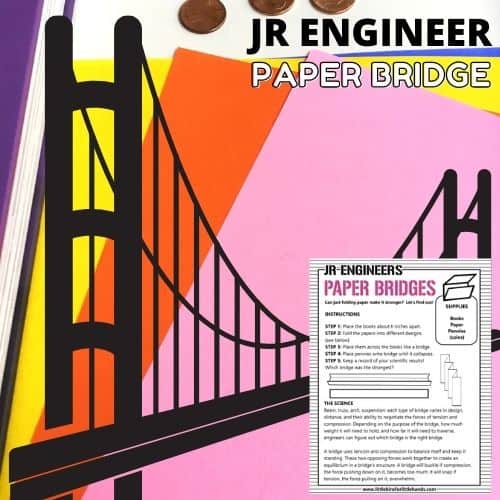
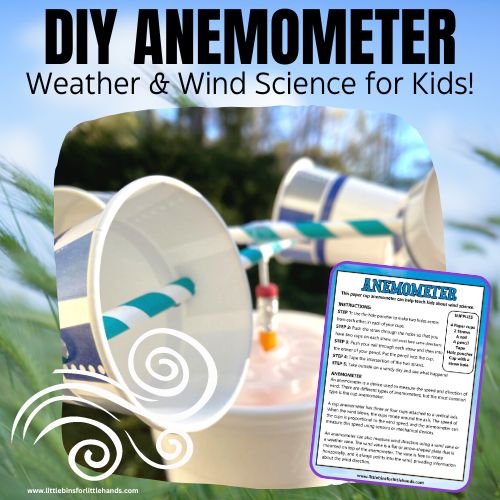
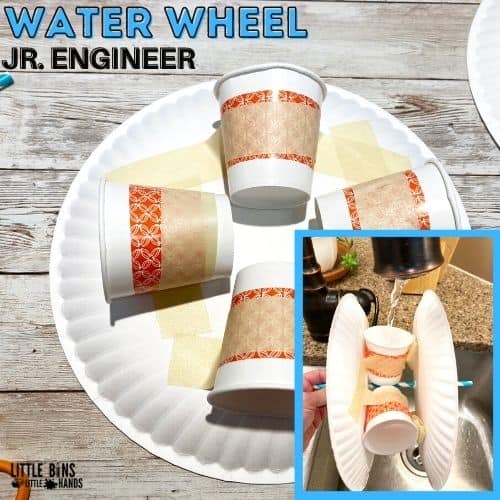
Mathematics in STEM
Mathematics is an important part of STEM education. It is crucial in developing problem-solving skills, logical reasoning, and quantitative thinking. Here are some key aspects of mathematics for STEM education:
- Basic Math Concepts: Kids learn foundational mathematical concepts such as numbers, counting, arithmetic operations (addition, subtraction, multiplication, division), fractions, geometry, measurement, and more. These concepts provide a solid mathematical foundation for further exploration.
- Problem-Solving: Mathematics helps kids develop problem-solving skills by applying logical thinking and mathematical reasoning to solve real-world problems. They learn to analyze problems, break them into smaller parts, and use mathematical strategies to find solutions.
- Data Analysis: Kids learn to collect, organize, and interpret data using mathematical concepts. They explore concepts like graphs, charts, averages, probability, and statistics to analyze and draw conclusions from data sets. Data analysis helps kids make informed decisions and understand the importance of data in various fields.
- Algebra and Patterns: Kids are introduced to algebraic thinking and patterns. They learn about variables, equations, patterns, and functions. Algebraic thinking helps them identify patterns, generalize relationships, and solve complex mathematical problems.
- Mathematical Modeling: Kids use mathematics to create models that represent real-world situations. They apply mathematical concepts to analyze and solve problems, predict outcomes, and make informed decisions. Mathematical modeling helps them see the practical applications of mathematics in different contexts.
- Computational Thinking: Mathematics contributes to developing computational thinking skills, which involve breaking down complex problems into smaller, manageable steps, creating algorithms, and using logical reasoning to solve them. Computational thinking aligns with problem-solving in mathematics and serves as a foundation for computer science and programming.
By incorporating mathematics into STEM education, kids develop a measurable foundation and learn to apply mathematical concepts to real-world scenarios. It fosters critical thinking, logical reasoning, and analytical skills needed in various STEM fields such as engineering, computer science, physics, and economics.
From counting, measuring, and patterns up to calculus, mathematics is a vital part of STEM!
Here are some great hands-on Math activities for preschoolers to elementary…
- What Weighs More
- Measuring Length
- Fibonacci Activities
- Fun with Pi Day
- LEGO Math Challenges
- Measurement Scavenger Hunt
- Printable Math Activities
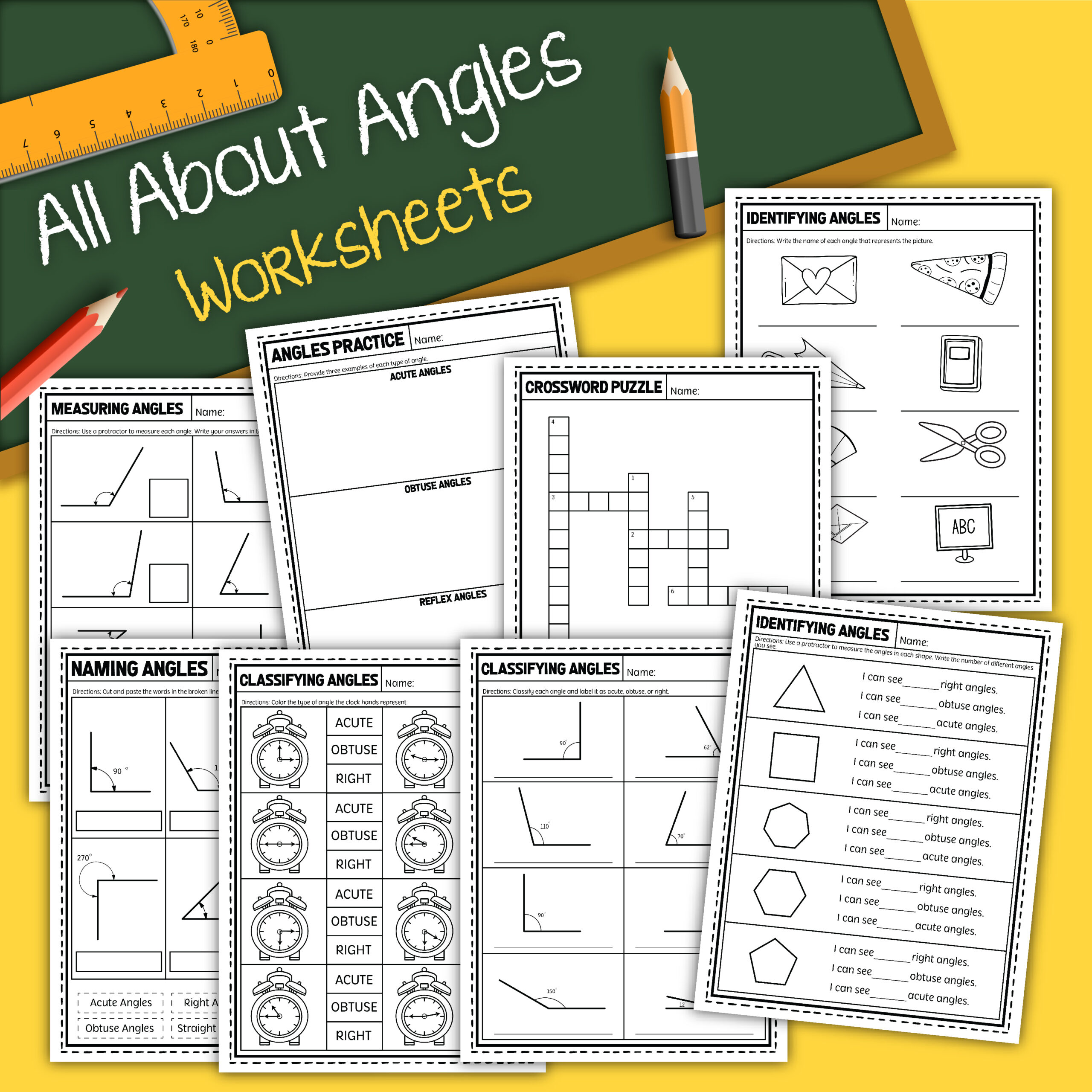
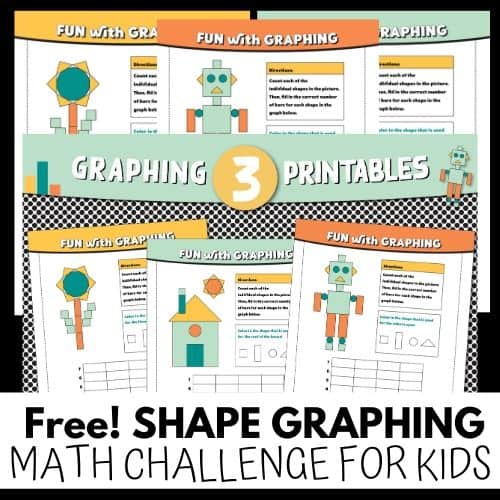
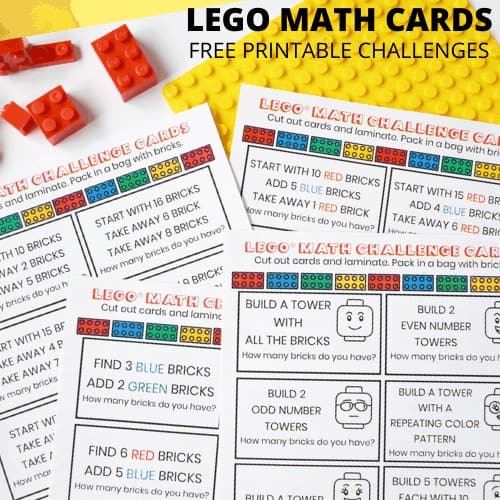

Bonus Printable STEM Pack for Kids
80+ Doable Engineering Projects in one convenient pack!
- Full instructions with sample images
- Activity-specific instruction sheets
- Data Collection Sheets
- Questions for Reflection
- Architecture Building Cards: Try the tallest tower challenge
- Bridge Building Cards: Explore different types of bridges to build your own.
- Paper Chain STEM Challenge: Who can make the longest chain? Great icebreaker or quick challenge!
- 3 Little Pigs Architectural Pack: Design a house that won’t blow away!
- Great marshmallow challenge: A classic challenge kids love!
- Real-world STEM challenge lesson but don’t know where to start? Our easy-to-follow template shows the steps!
- What’s the difference between a scientist and an engineer?
- Crossword and word search with engineering vocabulary.
- Engineering vocabulary cards
- Design a one-of-a-kind invention and write about it with this 5-page activity!




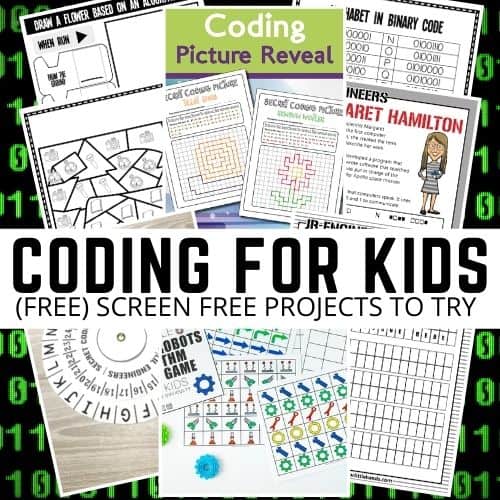
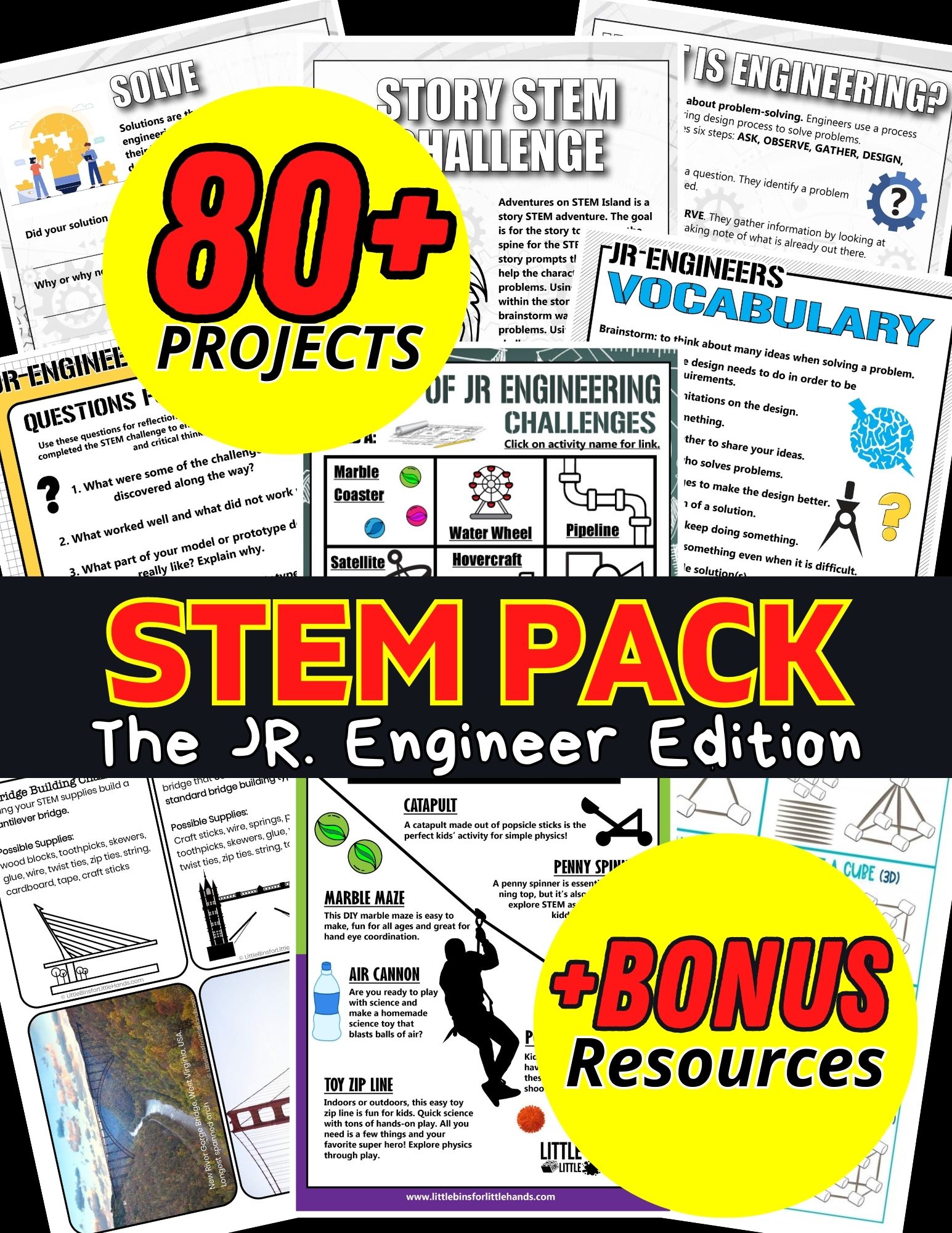






Happy New Year! I love all of the great resources you shared. I can’t wait to see all the posts in this great series.
This is exactly what I need as a kindergarten teacher. Our school is moving to STEM learning and I’m supposed to come up with ideas without much help. This looks great for me. Please email me any ideas and keep me posted if you would. I also have a 41/2 grandson that would love to do some of these things with me. What I need to do is get my parents involved in donating some of the items or having them freeze the water in milk cartons with cars or other items. So I’m thinking of doing the frozen water activity some afternoon. That looks very do able. I’m so glad I found this website and I appreciate what you’ve posted. Thanks
Dee Crowe
Thank you and feel free to be in touch if you have any questions.
Anyone know the exact lego kit or kits needed to make the really cool Lego zip line? I searched Amazon and Walmart and was OVER WHELMED by the plethora
of Lego options. so if anyone is a Lego expert and knows which one would allow us to make this little man encased in a Lego frame with an arched top for the zip line to go through I would very much appreciate your kind help and time.
Hi! Really all you need are your own LEGO pieces and think of it as a challenge to build it however you like? The LEGO Creative Boxes have lots of great pieces so one of those in a medium or large would probably be great. There is also a creative supplement box you could add too. You might find this post I wrote handy, https://littlebinsforlittlehands.com/starting-lego-collections-buying-lego/.
Good site you’ve got here.. It’s hard to find high-quality writing like yours these days. I honestly appreciate people like you! Take care!!
Hello…
I would like your permission to use some of the information from your article to present to parents at our school.
You may not copy the entire article but you may use a few sentences and direct them to the link.